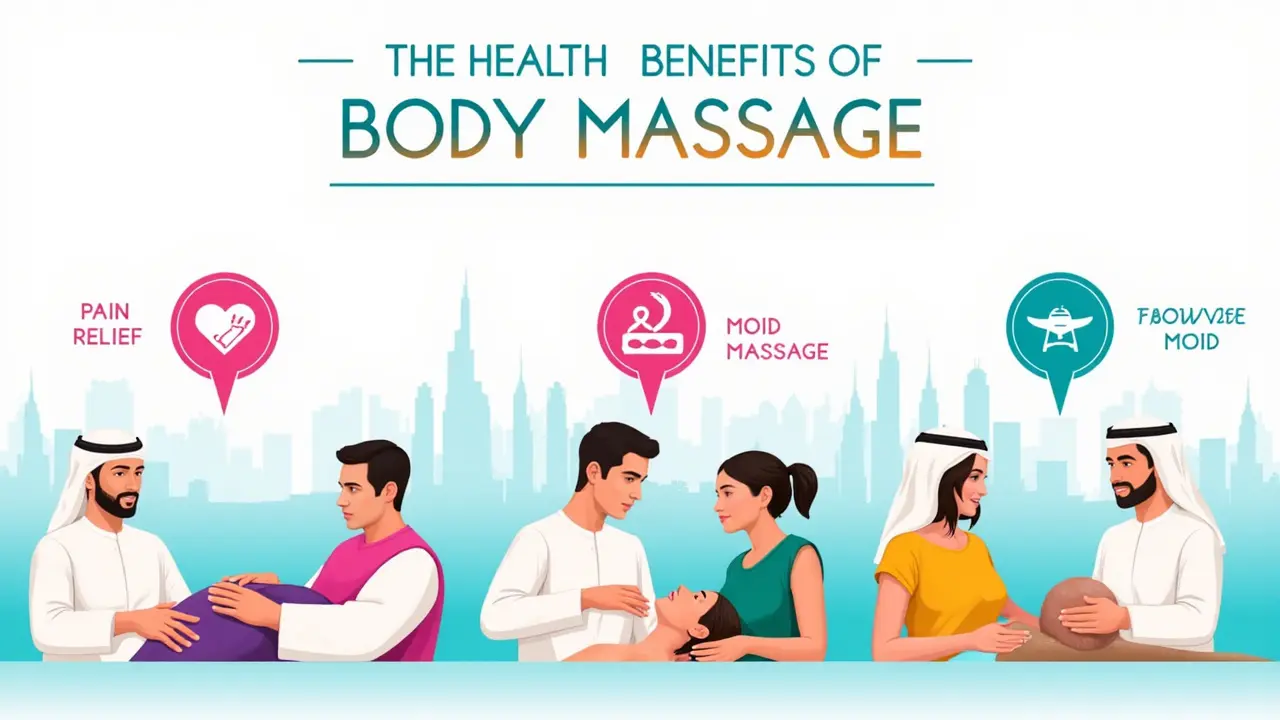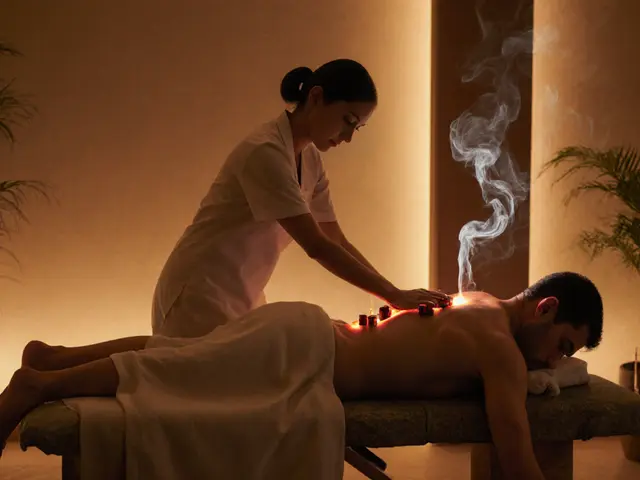Tight shoulders? Stiff neck? Guess what, you’re not alone—almost everyone deals with tension from work, workouts, or just daily life. That’s where body massage steps in. It’s not just about pampering; it’s a practical way to ease pain, boost your mood, and even help you sleep better.
No need to feel awkward if you’ve never had a massage. The whole point is to help you feel comfortable and, honestly, a lot lighter than when you walked in. From quick fixes after a tough gym session to full-on relaxation for those rough weeks, there’s a massage style for every need. And don’t worry, you don’t have to know all the fancy terms—this guide keeps it clear, simple, and straight to the point.
Key Points
Not sure if a body massage is for you? Let’s cut to the chase with everything you need to know for quick decision-making. Here are the things most folks should be aware of before booking a session.
- Body massage helps reduce muscle tension, lowers stress hormones, and boosts your mood. Studies out of the Mayo Clinic report people feel up to 40% less muscle pain after a professional massage.
- There are several popular types: Swedish (relaxing), deep tissue (targets knots), sports (for athletes), and Thai (stretch-focused). Each one is a little different, so you can match the style to your needs.
- Sessions generally last between 30 and 90 minutes. Most pros suggest at least an hour for full-body benefits, but some spots offer shorter chair massages for a quick fix.
- Good massage therapists are certified, use clean linens, and ask about your health and comfort before starting. Always check their credentials before booking.
- Prices range from $50 to $150 per session, depending on length, type, and location. Many places offer new client discounts or bulk session deals.
- While massage is generally safe, people with certain medical conditions—like blood clots or skin infections—should talk to their doctor first.
| Benefit | Stat/Finding |
|---|---|
| Muscle pain reduction | Up to 40% less pain reported (Mayo Clinic) |
| Lower stress | Cortisol levels can drop up to 30% post-massage |
| Better sleep | Research shows improved sleep quality with regular sessions |
All in all, a body massage isn’t just a treat; it’s a legit way to reset both mind and body. Keep these key points handy, and you’ll know exactly what to expect.
Benefits of Body Massage
Ever wonder why people keep coming back for that hour on the massage table? It’s more than just a feel-good escape. Body massage packs some serious perks for your health and daily life.
The most obvious win—say goodbye to muscle tension. Regular sessions help flush out those tight spots, boost blood flow, and cut down on pain from things like sitting at a desk, working out, or carrying stress on your shoulders. If you sit all day and end up with a stiff neck or sore lower back, a body massage can help loosen those muscles fast.
Another big plus: stress relief. Research published in the International Journal of Neuroscience found that just one hour of massage can lower levels of cortisol, your body’s main stress hormone, by up to 31%. That’s why you usually leave the session feeling lighter and a bit happier.
Good sleep is another spot where massage therapy shines. People who get massages tend to fall asleep quicker and have deeper rest. This makes a huge difference for folks dealing with insomnia or tossing and turning at night.
And if you're into sports—or even just working out at the gym—a massage can actually help you bounce back faster. It reduces soreness, helps you recover from injuries, and even improves flexibility, so you’re less likely to pull something during your next sweat session.
| Benefit | What Studies Show |
|---|---|
| Muscle Pain Relief | Reduces soreness and improves range of motion (American Massage Therapy Association, 2023) |
| Stress Reduction | Lowers cortisol by ~31% after one hour (Int. J. Neuroscience, 2005) |
| Improved Sleep | Helps with deep sleep and quicker sleep onset |
| Boosted Immune System | Massage = higher white blood cell counts (Touch Research Institute study) |
Here’s a quick rundown of what body massage can do for you:
- Relieves muscle pain and knots
- Lowers stress and anxiety
- Improves flexibility and movement
- Boosts energy (no more midday slumps!)
- Supports better posture and body awareness
Many regulars say they feel more “put together” and ready to tackle the day after each session. It’s not just marketing—modern research backs it up. A body massage is one of the easiest ways to care for both your body and your mind.

Types and How to Choose
If you ever searched for a body massage, you know the choices can make your head spin—Swedish, deep tissue, sports massage, hot stone, and more. Let’s break down what each type is best for, so you can pick what really suits your needs.
- Swedish massage: This is the go-to if you’re just looking to chill out and unwind. The therapist uses long, gentle strokes and kneading. Most first-timers try this because it’s relaxing and not too intense.
- Deep tissue: Got serious muscle knots? Deep tissue zeroes in on your trouble spots, working through tight layers. It’s a bit more intense—it can feel slightly uncomfortable at times, but you’ll notice a big difference with pain or stiffness.
- Sports massage: Perfect if you play sports or hit the gym hard. This style targets muscles you use the most and helps with recovery or injury prevention.
- Hot stone massage: Warm stones go on your back, shoulders, or legs, loosening up tension fast. It’s relaxing and helpful for deeper relaxation, especially if you’re always tense.
- Thai massage: There’s more stretching and movement than other types. No oil. You’ll wear loose clothing, and it kind of feels like guided yoga mixed with firm pressure.
Not sure which one’s for you? Ask yourself a few questions:
- Are you looking to relax or fix a specific problem (like pain or injury)?
- Do you want something gentle or something firm and intense?
- Are you recovering from a workout or injury?
- Do you feel sore all over or just in certain spots?
Most therapists will suggest starting with Swedish if you’re unsure. But if you wake up with a stiff back every morning, deep tissue might help more. If you just ran a marathon, sports massage is designed for quick recovery. Try hot stone if you want all the comfort and warmth, especially during cold days.
| Type | Best For | Pressure Level | Session Length (Avg.) |
|---|---|---|---|
| Swedish Massage | General relaxation, beginners | Light to Moderate | 60 min |
| Deep Tissue | Chronic pain, tight muscles | Firm to Strong | 60-90 min |
| Sports Massage | Athletes, active people | Moderate to Strong | 30-60 min |
| Hot Stone | Stress relief, deep relaxation | Light to Moderate | 60 min |
| Thai Massage | Flexibility, energy balance | Moderate to Firm | 60-90 min |
Quick tip: Let your therapist know about any injuries or health issues. Adjusting pressure or skipping certain areas is normal. Your comfort always comes first. The right body massage can make a massive difference, so don’t be shy about sharing what you need.
What to Expect and Tips
Wondering what it’s really like to get a body massage? Here’s how it usually goes down, minus all the fluff. You show up at the massage place—or sometimes, they even come to your place if you book mobile services. You’ll be asked to fill out a short form about your health and any aches or injuries. This isn’t just paperwork; it’s important so the therapist knows what to avoid and what to focus on.
The therapist will step out to let you undress to your comfort level. There’s always a towel or sheet to keep things private. When you’re ready, you lie on the massage table, and the session usually starts with gentle pressure and warming up the muscles. If you feel any discomfort during the massage, say something. Good therapists want you to speak up—they’re not mind readers.
You’ll probably get offered everything from scented oils to heated towels. If you have allergies or just aren’t a fan of certain smells, tell them upfront. The average session lasts 60 minutes, but you can go for 30 if you’re tight on time or up to 90 if you want the full recharge.
- Drink water before and after—this helps flush out toxins released during the massage.
- Don’t eat a heavy meal right before your appointment. You don’t want to feel uncomfortable on the table.
- Avoid workouts right after. Let your body chill and soak in the benefits.
- If it’s your first time, start with a Swedish massage. It’s gentle, easy-going, and a safe bet for most people.
Real talk: soreness the next day is normal, especially if you went for deep tissue work. If anything feels off or you spot unusual bruising, reach out to your therapist or a doctor just in case. And always double-check the credentials of your massage place. Reputable spots will have certified professionals and clean facilities. Book ahead—weekends fill up quickly, especially in bigger cities where everyone’s trying to unwind from the weekly grind.









